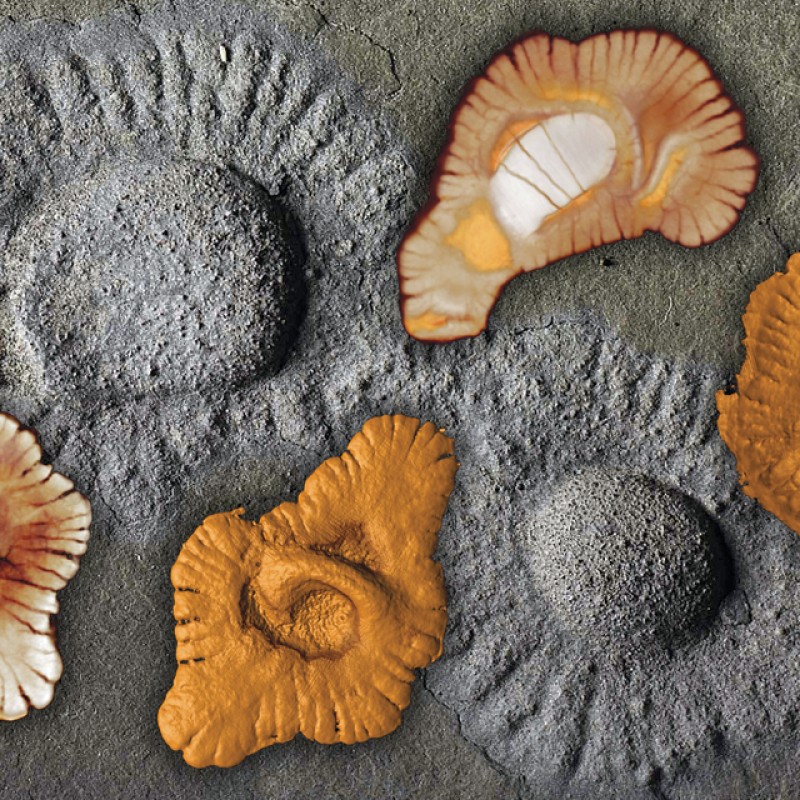Save-the-Date: Experiment Life – the Gabonionta
A world premiere – the Natural History Museum in Vienna is the first to show the oldest fossils of macroscopic multicellular life - 12th of March until 30th of June 2014
Experiment Life – the Gabonionta
A world premiere – the Natural
History Museum in Vienna is the first to show the oldest fossils of macroscopic multicellular life - 12th of March until 30th
of June 2014
In 2010, an article in the journal Nature hit like a bombshell. The French-Moroccan geologist Abderrazak
El Albani from the University of Poitiers and French National Center for Scientific Research (CNRS) described the oldest macrofossils
of complex, colonial organisms from 2.1-billion-year-old shales from Gabon. These outstanding fossils were investigated by
an international team of scientists led by Professor El Albani. This sensational discovery fundamentally changed our understanding
of evolution and pushed back the known origin of multicellularity about 1.5 billion years.
The Gabonionta
and the origin of life
Earliest geochemical traces of life are known from metamorphic rocks in West Greenland.
Carbon signatures in graphite with low levels of the stable isotope C13 indicate that organisms preferentially incorporated
the light carbon isotope C12 during metabolism.[1] The oldest body fossils are much younger and became preserved as microbial
mats in 3.48-billion-year-old rocks in Australia.[2] Bacteria and Archaea communities, some forming stromatolites of thick
mats and pillow-like structures, were the dominant expression of life during the Archean Eon. Fossil eukaryotes, distinguished
from the prokaryotes by their nucleus and organelles, are at least 1.8 billion years old.[3] This Proterozoic origin is supported
by multigene molecular clock analyses of extant Eukaryota.[4] Nevertheless, eukaryotes may have constituted an important part
of the biosphere much earlier, as their characteristic biomarkers appear in 2.7-billion-year-old hydrocarbons of the Pilbara
Craton in Australia.[5]
Pinpointing the origin of multicellularity as the next revolution of the biosphere is similarly
difficult. It seems to have developed several times independently in various domains of life.[6] Simple types of multicellularity
in which single cells communicate with each other are even known from cyanobacteria.[7] Although multicellularity is thus
documented since Proterozoic times, the origin of macroscopic multicellularity was traditionally defined much later with the
evolution of the Ediacara Fauna 580 million years ago.
Now, Abderrazak El Albani and his team [8] have revolutionized
this concept by discovering macroscopic, colonial and multicellular organisms in 2.1-billion-year-old sediments of Gabon –
the Gabonionta.


